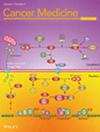Prognosis and Failure Patterns of 11q13 Amplified Local Advanced Squamous Cell Carcinoma of the Head and Neck
Abstract
Background
Amplification of 11q13 (FGF3/4/19, CCND1) is frequently observed in head and neck squamous cell carcinoma (HNSCC). However, there is a lack of research investigating 11q13 amplification as a prognostic marker for patients with locally advanced (LA) HNSCC who undergo postoperative radiotherapy (PORT).
Materials and Methods
This retrospective study included consecutive patients of LA-HNSCC who underwent radical surgical resection and PORT. The 11q13 amplification was tested by next-generation Sequencing (NGS) or fluorescent in situ hybridization (FISH). Propensity score matching (PSM) was used to match the amplification and wild-type groups. Univariate and multivariate analyses were conducted using Kaplan–Meier and Cox regression. Recurrence patterns and phenotypes in the amplification group were also assessed. Statistical analyses were performed using R software, with a p-value of < 0.05 considered statistically significant.
Results
A total of 70 patients were included (35 in the 11q13 amplification group and 35 in the wild-type group). Patients with 11q13 amplification exhibited significantly worse disease-free survival (DFS) (3-year DFS: 21.0% vs. 52.6%; p < 0.0019) and overall survival (OS) (3-year OS: 46.4% vs. 66.7%; p = 0.032) compared to wild-type patients. The recurrence pattern in the amplification group showed an approximately equal proportion of local-regional recurrence (LRR) and distant metastases (DM). The LRR predominantly occurred within the 60 Gy radiation field. Multivariate analyses revealed that 11q13 amplification significantly associated with worse DFS (p < 0.001) and OS (p = 0.007).
Conclusion
LA-HNSCC patients with 11q13 amplification exhibited significantly worse DFS and OS compared to wild-type patients. The recurrence pattern in the 11q13 amplification group was primarily characterized by in-field recurrences within the 60 Gy dose.


 求助内容:
求助内容: 应助结果提醒方式:
应助结果提醒方式:


